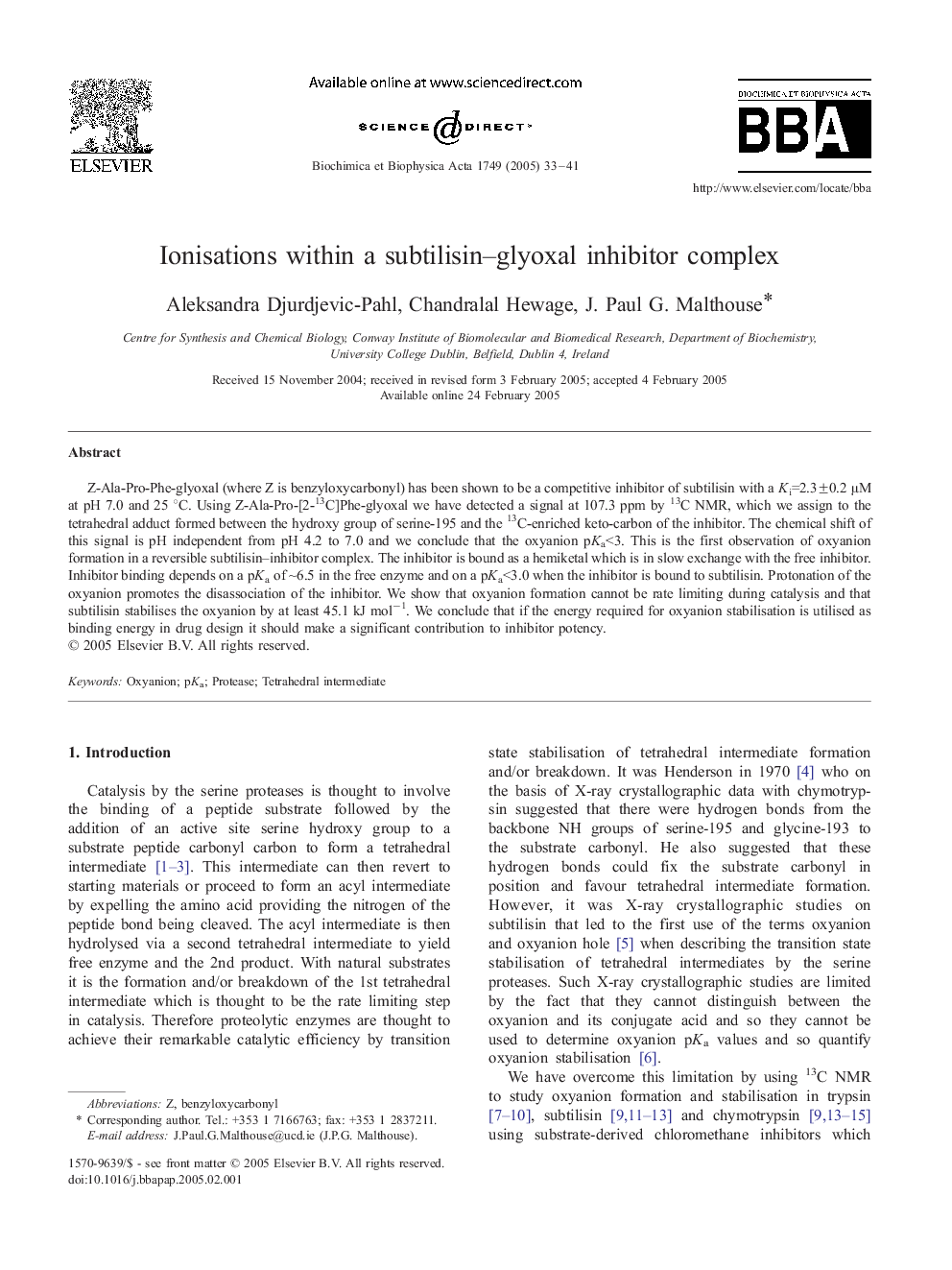| Article ID | Journal | Published Year | Pages | File Type |
|---|---|---|---|---|
| 10537954 | Biochimica et Biophysica Acta (BBA) - Proteins and Proteomics | 2005 | 9 Pages |
Abstract
Z-Ala-Pro-Phe-glyoxal (where Z is benzyloxycarbonyl) has been shown to be a competitive inhibitor of subtilisin with a Ki=2.3±0.2 μM at pH 7.0 and 25 °C. Using Z-Ala-Pro-[2-13C]Phe-glyoxal we have detected a signal at 107.3 ppm by 13C NMR, which we assign to the tetrahedral adduct formed between the hydroxy group of serine-195 and the 13C-enriched keto-carbon of the inhibitor. The chemical shift of this signal is pH independent from pH 4.2 to 7.0 and we conclude that the oxyanion pKa<3. This is the first observation of oxyanion formation in a reversible subtilisin-inhibitor complex. The inhibitor is bound as a hemiketal which is in slow exchange with the free inhibitor. Inhibitor binding depends on a pKa of â¼6.5 in the free enzyme and on a pKa<3.0 when the inhibitor is bound to subtilisin. Protonation of the oxyanion promotes the disassociation of the inhibitor. We show that oxyanion formation cannot be rate limiting during catalysis and that subtilisin stabilises the oxyanion by at least 45.1 kJ molâ1. We conclude that if the energy required for oxyanion stabilisation is utilised as binding energy in drug design it should make a significant contribution to inhibitor potency.
Related Topics
Physical Sciences and Engineering
Chemistry
Analytical Chemistry
Authors
Aleksandra Djurdjevic-Pahl, Chandralal Hewage, J. Paul G. Malthouse,
